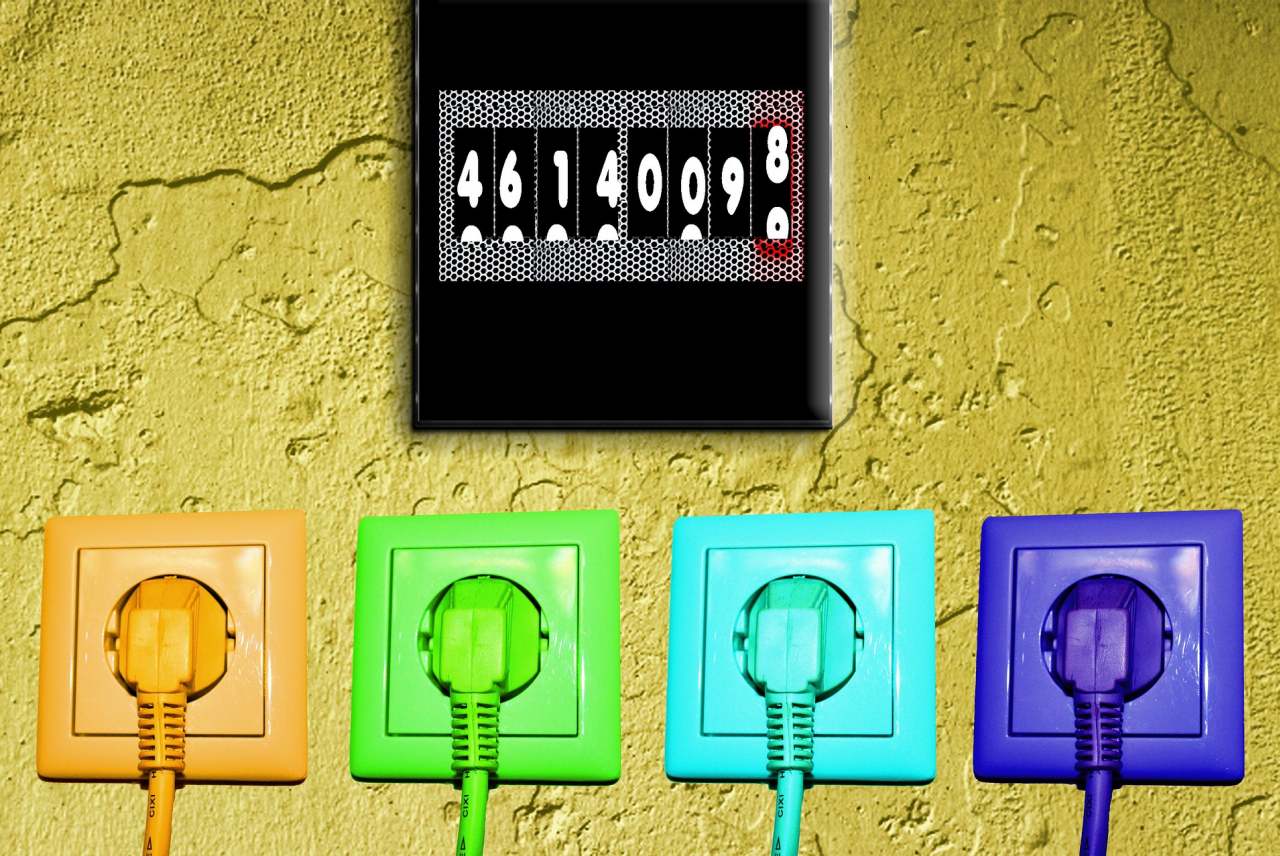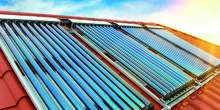1. Improve your energy efficiency
Energy efficiency includes making the most of your heating and using low-energy devices.
Insulating your home with internal or external cladding is the most expensive route, but cheaper options include fitting draught excluders around doors and windows, and closing doors (especially if some rooms are unheated) and closing curtains. Fitting secondary or double glazing also reduces loss of heating.
Using a smart meter is also a good idea, as this can reveal what is using a lot of energy, and encourages household members not to leave things on standby.
Other simple ways that you can reduce energy usage of your home include:
- turn lights off when you're not in a room
- turn the hot water temperature down one or more degrees
- take showers not baths
- make or buy thick or thermal curtains
- make a draught excluder for the bottom of the door using rags or clothing that you don't want to waste.
If you need to buy a domestic appliance, look for the most energy efficient models. For appliances like fridges or washing machines which use a lot of energy this can make a difference to your energy use and bill.
Energy labels changed in 2021 so don't be alarmed if some appliances don't have A rated models yet. Read more about the changes in our feature article on energy labels.
As heating uses so much of our energy, consider installing a smart thermostat - this may help you set the temperature differently across the house depending on which rooms you use the most. Our feature article has more about what to look for when choosing a smart thermostat.
2. Switch to energy efficient light bulbs
Legislation has phased out the most inefficient light bulbs (incandescent and most halogen), but there are still choices you can make with existing buying options. Choosing energy-efficient lighting helps reduce electricity bills and carbon dioxide emissions, but doesn't reduce the quality of light in the home.
According to the Energy Saving Trust, lighting makes up 15% of the average UK household electricity consumption.
The most efficient light bulbs are LED and also compact fluorescent lamps (CFL). LEDs can be used in dimmable lights and spotlights as well as normal lighting.
If you replace all the bulbs in your home with LED lights, you could reduce your carbon dioxide emissions by up to 40kg a year. This is equivalent to the carbon dioxide emitted by driving your car around 140 miles.
LED bulbs last up to ten times longer than compact fluorescents and far longer than typical incandescents. They are available in a range of watts, colours, bases and shapes, with dimmable controls, each having specific uses in various application areas.
3. Choose a renewable energy provider
Our guide to gas & electricity suppliers takes you through the complex issues of green tariffs, carbon off-setting, and the energy fuel mix of different suppliers.
Although green 100% renewable tariffs sound good, if the supplier is not investing in actual renewable energies they're not helping shift away from fossil fuels. Our guide recommends suppliers who are building and investing in renewable capacity.
You might also want to look at smart tariffs - these are a 21st century version of Economy 7 to help you use high-energy appliances at low-peak times.
4. Re-consider your boiler
Heating account for about half of what you spend in a year on energy bills, so an efficient system makes a big difference.
There was going to be a ban on installing gas boilers in new-build homes from 2025. However, this may now not happen until 2040, with the proposed date removed from the Ten Point Plan for a Green Industrial Revolution.
In response, Greenpeace UK's policy director, Doug Parr, said:
"As is often the issue in politics, Ministers are only focussed on the immediate, with short-term headlines front of mind. But failure to adequately invest in decarbonising our homes and replacing our polluting gas boilers now will result in delayed action on climate change. The cost of delay will dwarf necessary investments in greening our homes, and set us back when it comes to decarbonisation – the biggest investment story of the 21st century. Rishi Sunak’s short sightedness will actually be detrimental to the economy as well as attempts to tackle the devastating impacts of the climate crisis."
The move would also oppose advice from the International Energy Agency (IEA), which recently stressed that there is no place for new coal, oil or gas exploration or supplies and called for a global ban on new fossil-fuel boilers to be introduced by 2025 at the latest.
Both new and replacement boilers must, by law, be high-efficiency condensing boilers in the UK. These can reduce CO2 emissions by up to 30% and heating bills by 40% compared to old-style conventional boilers.
Condensing boilers are the most efficient as they convert over 90% of the fuel they use into useful heat, compared to around 60% for an old-style boiler.
Whilst gas may be the cheapest option currently, if you are looking to reduce your carbon footprint, you might want to consider a low carbon heating system such as a heat pump.
5. Consider installing solar PV panels or a heat pump
Generating your own energy is a great way to save money, and uses renewable sources like the sun.
Solar PV panels replace carbon-releasing energy sources such as oil and gas. These carbon savings quickly compensate for the greenhouse gases released in their manufacture and transport. For solar PV panels the sum of all the energy required to produce a unit of solar energy (embedded energy) is around 4% of its output.
Our guide to solar PV panels has detailed information as to what to look for, along with some top tips for potential buyers.
Heat pumps - ground or air - may be an option for some houses, and our our guide to heat pumps discusses their efficiency and performance, environmental impact, carbon savings and running costs, as well as giving our Best Buys and recommended buys.
You might also want to look at solar thermal, for heating your hot water. Again, our guide explains the technology with recommended best buys.





